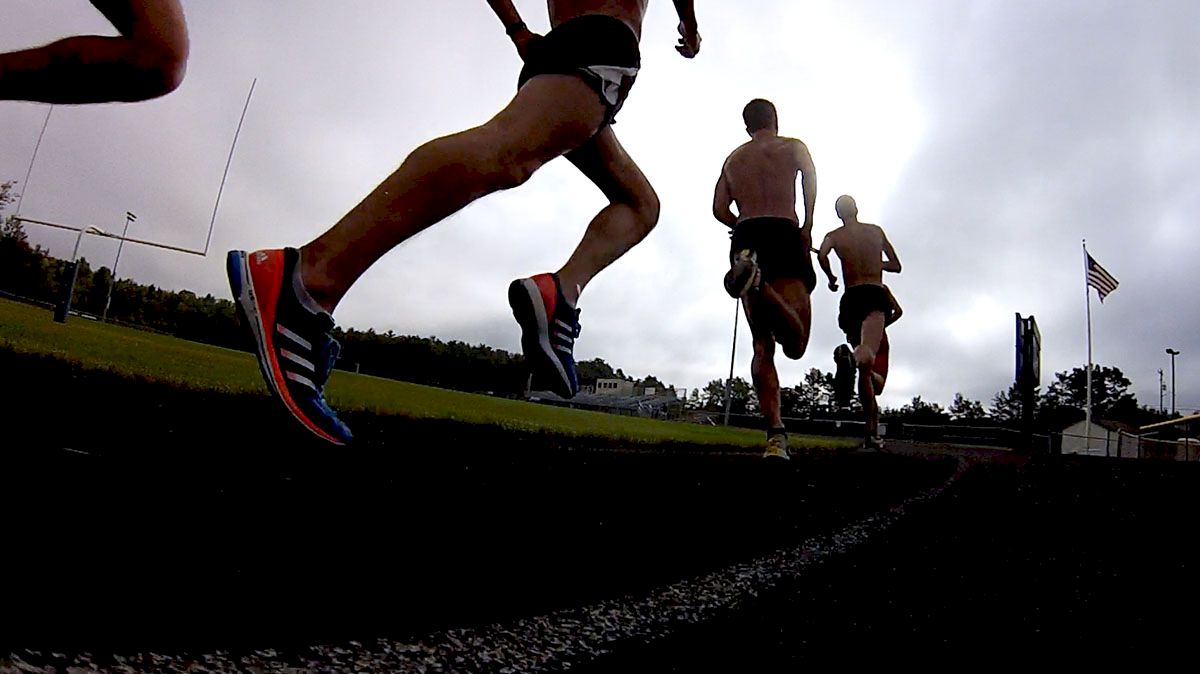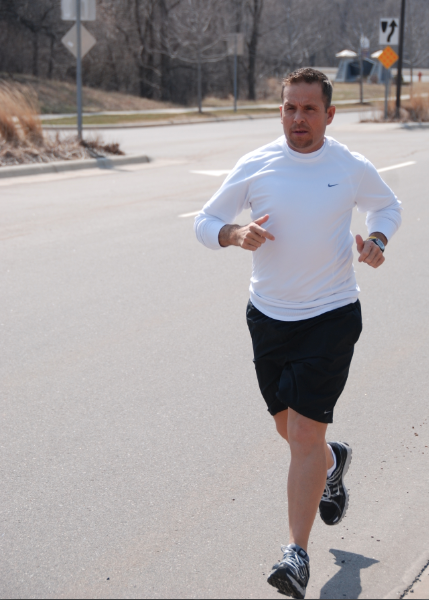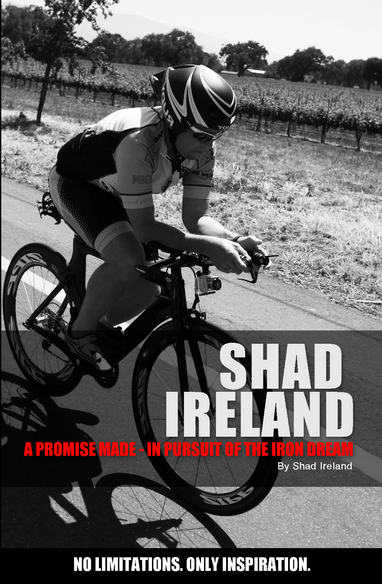Shad Ireland: A dialysis patient looking to inspire in New York
Shad Ireland: A dialysis patient looking to inspire in New York

On Saturday, Shad Ireland will wake up at three o’clock in the morning to connect himself to a dialysis machine for five hours. He will then head to the airport and catch a plane to New York City. Once he lands, he will go to the ING New York City Marathon expo to pick up his bib number for Sunday’s race and finally check into the hotel for pre-race preparations.
Ireland reached out to New York Road Runners for a chance to run the marathon after several attempts in previous years. They provided him with a spot and now he looks to cross off the New York City Marathon from his list of dream races.
“I’ve got a lot of races on my checklist. I’d like to run Boston. I would love to go international and maybe run London,” Ireland said. “My dream has always been the Ironman World Championships, so I’m trying to get there. I’m returning to racing after a couple of years of focusing on my foundation.”
Ireland had a health scare that would have crushed all those plans of future racing. Doctors found that he had avascular necrosis. The area where his leg and his ankle connected started to die, because he was not getting blood in that spot.
The diagnosis was made after a point in which doctors felt comfortable operating on the ankle.
“The surgeon was pretty honest with me. He said ‘Your career is over and you may lose your foot,’” Ireland said. “I just told him that wasn’t an option. He responded by saying he would operate on it and give it a 50/50 shot.”
He underwent surgery on Dec. 31st and was put in a walking boot for six weeks. Because he was a dialysis patient, doctors believed it would take at least a year for him to heal.
When he finally came out of the boot, Ireland managed to surprise everyone at the doctor’s office. The doctor asked around if he was looking at the correct x-ray. To everyone’s astonishment, Ireland had healed much faster than anyone anticipated. The one catch was that if he felt any discomfort in his foot, he would have to return to the doctor’s office and look at possibly having it removed.
With just days to go until the New York City Marathon, Ireland wishes he’d done more running in preparation for the race, but the goal discussed with his coach is just finishing the race.
His coach, who chose to remain anonymous, put together a training plan looking to strengthen Ireland’s running in preparation for Ironman races.
“If you look at all the top triathletes, they’re all just phenomenal runners,” Ireland said. “Running is one of the things that I’ve struggled with. We’re going to focus on that and I’m hoping run in hopefully five hours. I’m happy with that, because my coach wants me to be out there running slow for as long as I can. The key thing is building a huge cardiovascular base.”
Steve Prefontaine was one of the runners that Ireland looked up to as a role model. He was attracted to the Oregon runner's style of racing from the front and relentlessly attacking the pace. ‘Somebody may beat me, but they are going to have to bleed to do it’ is the Prefontaine quote that resonates with Ireland the most.
-----
Growing up in Minnesota, Ireland was always moving around and doing physical exercise. He loved to go outside and run for a few miles with the dream of being a professional athlete someday.
In May 1983, just weeks before his 11th birthday, Ireland was diagnosed with diseased kidneys.
He looked up at his mother and could not process why she started crying. She was a nurse and understood the words coming from the doctor’s mouth.
“(The doctors) didn’t directly say this to me, but I realized pretty quickly the dreams I had as a child were never going to happen,” Ireland said.
The life expectancy for someone given the same diagnosis is two to five years without a transplant. The current wait time for a kidney transplant in the United States at the moment is about six and half years. People are dying before they even get a chance to be transplanted.
“Being diagnosed in 1983, things were a lot different. It was very scary for me, because I started dialysis with nine other kids at the University of Minnesota. I watched everyone of those kids die. They succumbed to the disease. It was difficult.”
Ireland believed he was going to die. He abandoned the dreams and goals that he had. At age 10, he was forced to turn into an adult.
“At age 11, I attempted suicide,” Ireland said. “My teenage years were very difficult. Dialysis was horrific. I connected to a machine six hours a day. I got home and I laid in the bathroom hugging the toilet until I passed out. My mom would scoop me off the floor and put me in bed. I had to look forward to that every other day.”
As he became sicker, questions of how to fix this disease swirled through Ireland’s head. Even after decades of medical advances, the answer is not out there yet.
Ireland’s mother knew the outlook was bleak. In 2005, she passed away after a battle with lung cancer, but was always supportive of his latest endeavor to overcome his disease.
“I think she would be quite proud and quite surprised,” Ireland paused and laughed. “Well probably not surprised. I mean I’ve always been stubborn.”
------
At 16 years old, the doctors told Ireland that he would not live past 25. After Ireland’s first kidney transplant failed, his weight dropped from 140 pounds to 75 pounds, and he was given just six months to live. He would spend a majority of the next six weeks in a coma.
“It was at the weakest point in my life that I found my strength,” Ireland reflected. “I remember how debilitated I was. I remember they had to teach me how to walk again. I was laying on my mother’s couch when I saw the Ironman triathlon on television.”
Up until this point in his life, Ireland had abandoned all hope. The goals and dreams of competing in sports were a thing of the past.
His mother saw him sitting on the edge of his couch talking and yelling at the television. Ireland thought the competitors on television were doing something impossible. Ireland turned to his mother.
“That’s going to be me,” Ireland said.
“You need a nap,” his mother said as she laughed.
Ireland went to sleep on the couch that night dreaming of Hawaii.
“It was that promise that I made to myself that gave me the strength to fight,” Ireland said. “It took me 24 months just to gain five pounds. I focused on coming back and thought about it every day. It got me to a point where I was stable,” Ireland said. “Unfortunately, at one point I forgot I made that promise to myself, because I was focusing on the negative instead of the positive. I was focusing on ‘I’m suppose to be dead’ and then it never happened.”
Ireland took another leap forward and impressed his mother by deciding to attend college and get himself an education.
----
In college, he walked into a class and the professor said “Today is the day your life changes. Today is the day I teach you to ask questions and seek answers. Today I have two questions for you: Why are you here and what inspires you?”
At that point, not much inspired Ireland. Yet, he met a professor that taught him the importance of reflection, realization and perception.
Among the many assignments for that class, Ireland remembers one in which he was assigned to write about a traumatic experience in his life.
“My whole life has been traumatic,” he laughed and told his professor.
“Well you’ll have a lot to write about, won’t you?” responded the professor.
Ireland enjoyed reading while in school. He began to look inward and asked himself a lot of tough questions. He quickly changed his outlook on life.
“I believe that an individual inspired can accomplish anything,” Ireland said. “We have the ability to inspire others and doing what inspires us.”
The first step to getting off the couch was believing in himself.
-----
 Training was delayed for years even after he watched his first competition on television, because he struggled to function as a dialysis patient. He did not begin his training until 2003.
Training was delayed for years even after he watched his first competition on television, because he struggled to function as a dialysis patient. He did not begin his training until 2003.
All 80 pounds of him walked into the dialysis clinic and announced he was going to complete an Ironman. Everyone laughed.
“The first day in the gym was...embarrassing,” Ireland said. “I knew I had to swim, bike and run. I found myself surrounded by guys who looked like they could play in the NFL, but I couldn’t even lift five pound dumbbells.”
He left the weight room and then tried running on the treadmill. He could not walk on the machine for 30 seconds.
“I didn’t understand any of this. I remember wanting to leave the gym. I felt humiliated. I had no muscular development at all,” Ireland said. “I drew a line in the sand and I told myself that I wasn’t backing up from this line.”
By the end of that week, he found himself walking 30 minutes on the treadmill. It was one the most grueling tasks he had ever accomplished.
“At 20 seconds, I wanted to die and it seemed like those last 10 seconds took an hour,” Ireland said. “But I did it."
Those 30 seconds turned into two minutes. Those two minutes turned into four minutes. Six months later, he was running for the first time since he was diagnosed.
His confidence was riding high as he self-coached himself back into running form. Then Ireland met a triathlete and shared his goals of running an Ironman race. The triathlete agreed to coach him.
“He put me on the treadmill and said ‘Let’s see what you can do.’ After five minutes, he said I should be warmed up,” Ireland said. “I looked at him and said you’re looking at all I can do.”
At that point he was running about 15-minutes per mile. Most people may be able to walk at that pace, but it took Ireland six months to get to that point.
-----
By the time Ireland competed at the Lake Placid Ironman in New York, he was running eight-minutes per mile. He did not run that pace during the 26.2 mile run, but it served as a reality check for the first-time competitor.
The important thing was that he finished. He made history as the first dialysis patient to complete an Ironman race.
So many emotions ran through his head at the moment he crossed the finish line. He had received emails from all over the world telling him that he wouldn’t be able to do this and he was killing himself.
Many of the foods and drinks handed out along the course of a marathon are off-limits to Ireland since his body can not process potassium, phosphorus, and electrolytes must be kept under control. A banana would kill him.
“I was in a lot of pain. I remember that my shoes were white when I started running and they were red from blood by the time I finished,” Ireland said. “I had some bad blisters, but I was so happy. I remember clutching the medal they gave me. I finally had the chance to accomplish something I wanted as a child.”
Every finish line he has crossed, Ireland has felt the same way. His mentality has now changed from just finishing a race to racing for a chance of competing at the world championship level.
“When I’m running, I’m not a dialysis patient. I’m a runner.”
-----
 Shortly after competing at Lake Placid, Shad realized this was never about him. As an athlete, he realized he could make a difference in the lives of people he cared about. This was evident in the emails he received from around the world.
Shortly after competing at Lake Placid, Shad realized this was never about him. As an athlete, he realized he could make a difference in the lives of people he cared about. This was evident in the emails he received from around the world.
“I’m still just that 10-year-old kid that doesn’t want to die. I just want to be an athlete,” Ireland said. “I wrote a mission statement and it said that if I can inspire one person than my achievements as an athlete would mean more than the realization of a personal dream. It will mean that I have made a difference.”
It took a while for Ireland to find who he wants to try and inspire, but The Shad Ireland Foundation has managed to empower families and individuals affected by kidney disease.
Ireland believes that he can compete in Hawaii in 2014, but the dream has also added philanthropy. He wants to raise $5 million for an endowment and that money would be professionally managed and never touched. He wants to donate 100 percent of the money that he takes in to charity.
-----
A lot of people criticize Ireland while he’s training and calling him crazy for continuing to compete and push his body to the limit. He doesn’t know how much of a toll it is going to take to run New York. He does know is that he will finish the race. He does know that he will be running another marathon in Las Vegas two weeks later.
The medical community does not believe what Ireland has accomplished can be done again. He is the only dialysis patient to have completed an Ironman Triathlon. He’s competed in over 20 races and expects to continue running for years to come. This is all after hooking himself up to a machine for 31 years.
His return to the Ironman will be on June 29 in Coeur D’Alene, Idaho. There are 50 qualifying spots for Kona. His third book titled “The Definition of Impossible” will be released before that.
-----
On Sunday, there will be over 50,000 participants expected to run and thousands more will be cheering along the streets of New York.
None of Ireland’s friends or family were able to make the trip to New York City for the weekend. He will be traveling alone, but crossing the finish line with his mother in spirit. If there is a non-elite runner that you choose to root for on Sunday, be sure to include the man wearing bib No. 59755 in those cheers and well wishes.
Chris Chavez is a staff writer for Flotrack and a journalism major at Marquette University. He once beat Joey Fatone of NSYNC in a half-marathon. Feel free to to reach him with any questions, comments, or feedback on Twitter or by email.